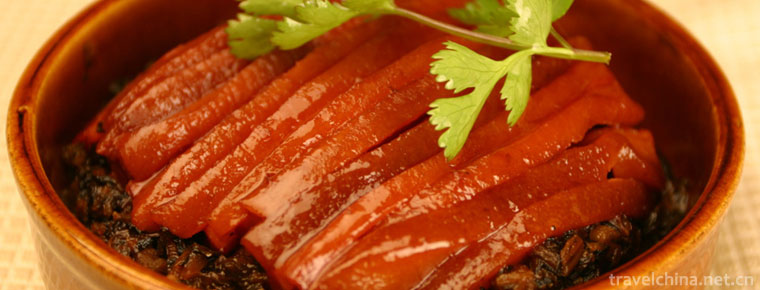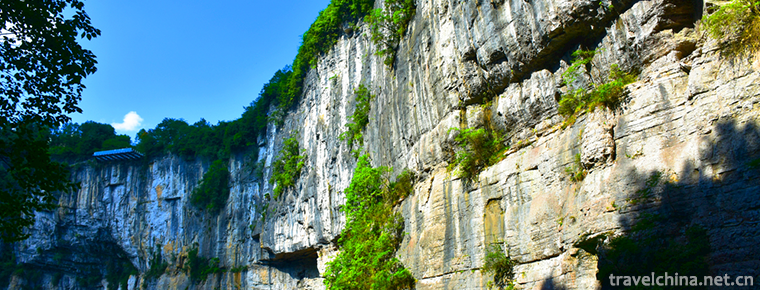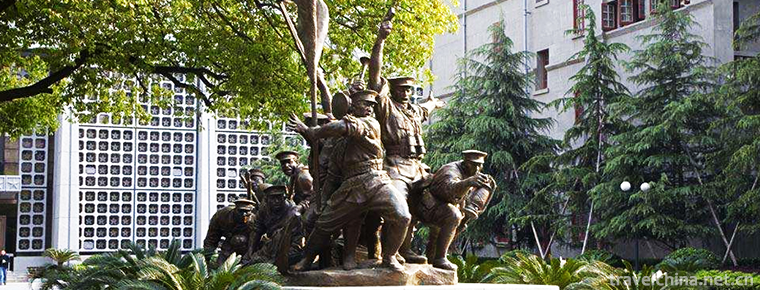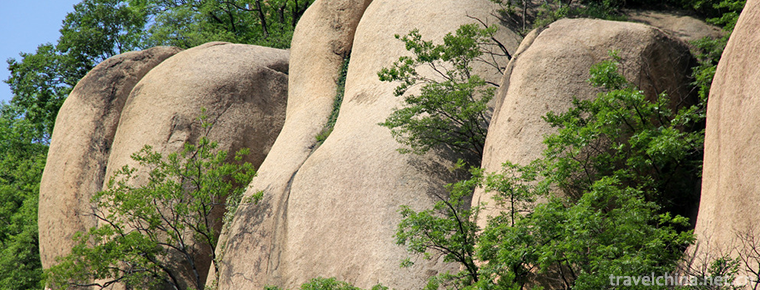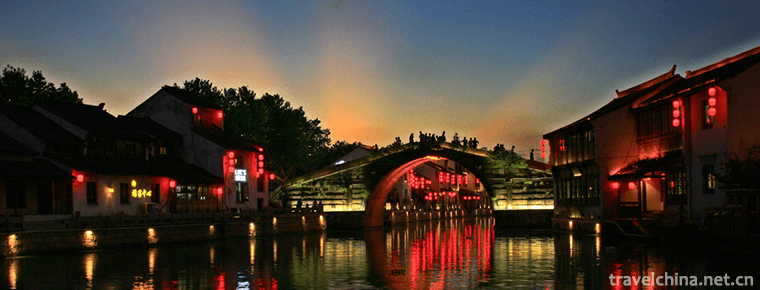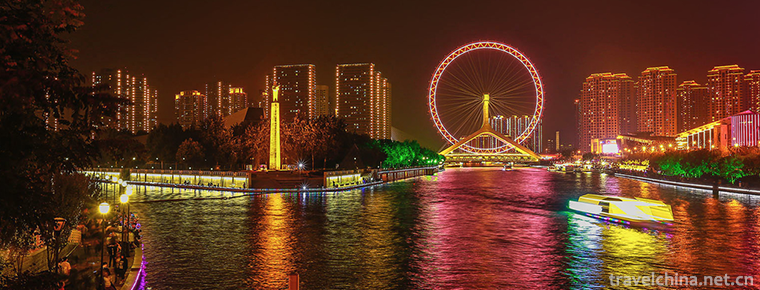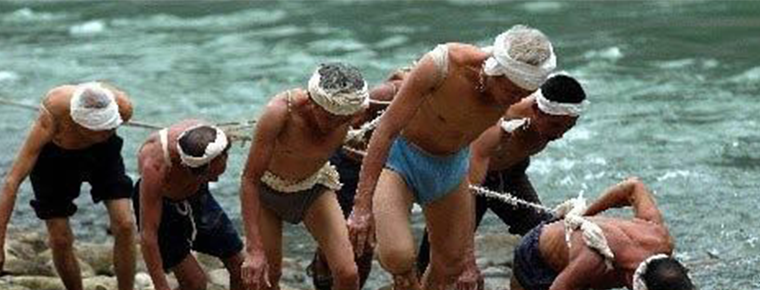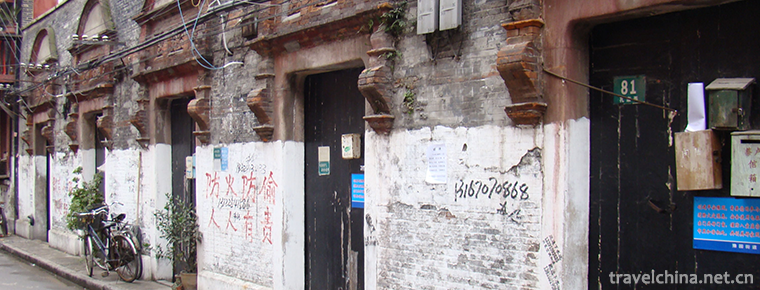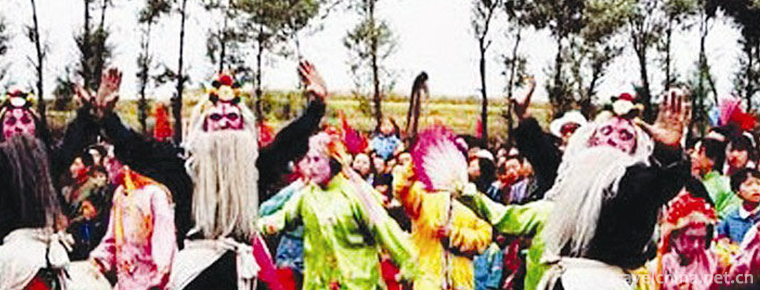Bamboo weaving
Bamboo weaving
The traditional bamboo weaving technology has a long history and is rich in the crystallization of the hard work of the working people of the Chinese nation. Bamboo weaving crafts are divided into fine silk crafts and coarse silk bamboo weaving crafts. On June 7, 2008, bamboo weaving was approved by the State Council to be included in the second batch of national intangible cultural heritage list.
Historical Origin
According to archaeological data, when people began to settle down, they engaged in simple agricultural and animal husbandry production. There was a little surplus of rice millet and hunting food. They stored food and drinking water for occasional needs. At this time, local materials, using various stone axes, stone knives and other tools to cut the branches of plants into baskets, baskets and other utensils. In practice, it is found that bamboo is crisp, crackable, elastic and tough, and can be knitted easily and durable. Therefore, bamboo became the main material for utensil preparation at that time.
China's pottery also began in the Neolithic Age. Its formation is closely related to the preparation of bamboo weaving. Ancient people unintentionally found that containers coated with clay are not easy to permeate after burning, and can hold liquids. So the baskets made of bamboo and rattan were used as models, and then pasted with mud inside and outside the baskets to make pottery culture of bamboo and rattan tyres. Bake on fire to make utensils. Later, people directly used clay to make all kinds of shaped neptunium, instead of using bamboo knitting. However, they are still very fond of bamboo and rattan geometry, so they imitate the patterns of basket, basket, mat and other knitted fabrics on the surface of pottery in semi-dry state as decoration.
In the Yin and Shang Dynasties, the weaving patterns of bamboo and rattan became rich. In the printing of pottery, there are square pattern, rice pattern, palindrome, ripple and other decorations. In the Spring and Autumn Period and the Warring States Period, the utilization of bamboo was expanded, and the weaving of bamboo gradually developed like technology. The decorative smell of bamboo weaving patterns became stronger and stronger, and the weaving became more and more fine.
During the Warring States Period, a man devoted to the study of bamboo weaving skills came out. He was Mount Taishan.
During the Warring States Period, the weaving techniques of the State of Chu were also well developed, with nearly 100 pieces unearthed, such as bamboo mats, curtains, baskets, fans, baskets, baskets and so on.
Bamboo weaving in Qin and Han Dynasty followed the weaving skills of Chu State. In 1980, Chinese archaeologists unearthed the "Qinling bronze carriage" in Xi'an. According to expert analysis, the square pattern was recast according to the square pattern of bamboo mat weaving at that time.
In addition, bamboo knitting is also made into toys for children by skilled craftsmen. The Lantern Festival has been popular among the people since the Tang Dynasty, and it was very popular in the Song Dynasty. Some high-ranking officials and dignitaries often invite lamp-making artists to create exquisite lanterns. One of them is to use bamboo strips to tie bones and paste silk or colored paper on the periphery. Some also use bamboo silk knitting as decoration.
Dragon lanterns originated in the Han Dynasty and became more popular in the Song Dynasty. Dragon heads and dragon bodies are mostly made of bamboo strips as inner bones, and the scales on the Dragon bodies are often tied with bamboo silk.
There is also a kind of folk opera called "Bamboo Circus". Since the Sui and Tang Dynasties. The performance of the play is related to horses, such as "Zhaojun Exit Fortress" and so on. The horses the actors ride are made of bamboo.
In the early Ming Dynasty, the number of bamboo weaving artists in the south of the Yangtze River increased continuously, and the number of street-to-street processing came to the door. Bamboo mat, bamboo basket and bamboo box are quite exquisite craftsmanship bamboo weaving. Especially bamboo weaving is the most famous. Yiyang Shuizhu mat was founded in late Yuan and early Ming Dynasty.
In the mid-Ming Dynasty, the use of bamboo knitting was further expanded, and the knitting became more and more exquisite. Combining with lacquerware and other techniques, many high-grade bamboo knitting utensils were created. Such as picture boxes of precious books and paintings, small round boxes for jewelry, large round boxes for food placement, etc.
” The Brown lacquer bamboo woven round box is a kind of bamboo woven round box used by officials and officials in Ming Dynasty.
During the Ming and Qing Dynasties, especially after Qianlong, bamboo weaving technology was developed in an all-round way. Bamboo baskets appeared in Jiangsu and Zhejiang provinces.
From the end of the 19th century to the 1930s, craftsmanship bamboo weaving flourished in various parts of southern China. Bamboo knitting techniques and patterns have been improved, and more than 150 kinds of knitting methods have been brought together.
After 1937, under the iron hoof of the invading Japanese army, bamboo Knitters put down their bamboo knives in succession to engage in other businesses, only a small number of artists left in the old temple to continue the bamboo knitting process.
After the victory of the War of Resistance Against Japan, the bamboo weaving technology in China gradually recovered. After the 1950s, bamboo weaving art began to return to the arts and crafts industry and entered the palace of art. Bamboo weaving artists with excellent skills have also sprung up in large numbers, and some of them have been appraised as "arts and crafts artists" and "senior arts and crafts artists". He has won the honorary titles of "Master of Chinese Arts and Crafts" and "Master of Chinese Bamboo Crafts".
Since 1990, Shengzhou, Zhejiang Province, Qingshen County and Hequ County, Sichuan Province, have been named "the home of bamboo weaving in China".
After entering the 21st century, bamboo weaving technology has gradually lost its market competitiveness and declined, and its weaving technology has become "intangible cultural heritage". However, many bamboo weaving artists are still pursuing new art tirelessly, and new works are emerging slowly.
Production process
Bamboo knitting process can be divided into three processes: bottom, knitting and lock. In the process of knitting, warp and weft knitting is the main method. On the basis of warp and weft knitting, various techniques can be inserted, such as sparse knitting, insertion, piercing, cutting, locking, nailing, binding, sleeving, etc.
Make the patterns varied. Products that need to be matched with other colors are intertwined with dyed bamboo slices or silks to form bright patterns with strong contrast of various colors.
The bamboo material used in the bamboo weaving process of porcelain body is made of knotless porcelain bamboo, which is specially selected from Chengdu area. Through more than ten processes, such as breaking bamboo, baking color, jointing, layering, fixing color, scraping, scratching and drawing evenly, the fine bamboo silk is manually manufactured. The section of bamboo filament used in bamboo knitting with porcelain body is all rectangular. The bamboo knitting of porcelain body is made by hand and a knife.
The bamboo knitting products with ceramic body only use one layer of bamboo surface, and the fibers are very dense. At the same time, special treatment is carried out, which can withstand drying, no distortion, no moth, water resistance and cleaning.
Characteristic
The section of bamboo silk used in bamboo knitting is all rectangular. There are strict requirements on thickness and thickness. The thickness of one or two hair silks is only one or two, and the width of four or five hair silks is only four or five. The root of bamboo silk is evenly knifed to achieve uniformity in thickness and thickness. Traditional bamboo weaving technology has a long history, rich in the hard work of the working people. Bamboo weaving crafts are divided into fine silk crafts and coarse silk bamboo weaving crafts. Different styles of bamboo weaving works have been exhibited in traditional art blocks. They are not only Qingshen bamboo weaving with long history and excellent skills, but also Liu's bamboo weaving, which combines modern fashion with traditional Chinese culture and crafts.
Classification
Porcelain bamboo woven products are mainly divided into several categories according to their shapes, such as bottle jars, box sets and so on. Vases are small to 5 CM single bottles, but also large to 145 CM 1000 bottles, suitable for different occasions. Tans and cans have tea cups, sugar cans, tea cans and other practical products. Bamboo bags have two categories and six specifications. Bamboo woven boxes are bamboo, paper and lacquerware. The specifications are 7CM, 9CM, 11CM, 13CM and 15CM. They are also divided into single boxes, inner three boxes and set three boxes. Bamboo knitting tools are the main varieties and technical advantages of the factory. It is the unique skill of bamboo braiding products with porcelain fetuses, which is different from any other bamboo braiding products. It is the place where the bamboo braiding technology with porcelain fetuses can best reflect the characteristics of fine knitting technology. There are tea sets, wine sets, coffee sets, stationery and cigarette sets, Kung Fu tea sets, Japanese tea sets and Tiliang tea sets. According to specifications, from two sets of three sets of wine and tea bowls to fifteen sets of twenty-two sets of coffee sets. According to the material used in the bottom tire, there are not only ceramic, ceramic, lacquer and glass tires, but also purple sand tires preferred by Taiwanese customers. The bamboo knitting products with different ceramic bodies can be divided into ordinary knitting, jacquard knitting and multi-color pattern knitting. Ordinary braiding is mainly made of bronze baked silk with common geometric patterns, which are mostly used to produce batch products. Jacquard weaving is made of Xinzhu green silk with equal latitude and longitude. It is easy to weave all kinds of monochrome pattern handwriting, and panda pattern weaving is more common. It mainly produces flower vases, tea sets and other products. Multicolored pattern weaving gives full play to the characteristics of multicolored silk, uses a variety of different techniques and different colors to weave a variety of patterns, mostly for the production of exhibits, gifts and high-end products. The main techniques used are sparse knitting, sparse combination knitting, broken warp knitting, warp knitting for change, color-dipping knitting, relief knitting, three-dimensional knitting and so on. Using the method of multi-color pattern weaving, we can make beautiful patterns such as landscape flowers and birds, birds and animals, and character stories.
The bamboo weaving of porcelain tire is characterized by forming and fastening the bottom tire, which is also limited by it. The factory has developed new products such as bamboo jewelry boxes, bamboo knitting packages, bamboo knitting animals and so on. We will continue to work hard to create the future of bamboo woven porcelain.
Conventional product classification: bamboo woven vases, tea sets, coffee sets, wine sets, stationery, bamboo woven plane paintings.
Bamboo knitting technology can be divided into fine silk technology and thick silk bamboo knitting crafts (description: ceramic and non-ceramic body crafts). The finished product is mainly made by cutting, scratching, polishing and splitting bamboo, and knitting the strips into a certain thickness. Dongzhang bamboo knitting is mainly rough silk bamboo knitting technology.
1. Brief introduction of fine silk bamboo weaving technology (ceramic body bamboo weaving technology): ceramic body bamboo weaving technology is unique, with fine specialty, with the technical characteristics of "selected materials, extra fine silk, close to the tire, tightly hidden head, five-color picture". In the process of production, all hands and a knife are used to knit by hand, so that the root bamboo silk is shaped according to the body, and close to the porcelain surface. All the joints are hidden, as if they were naturally generated and integrated. The main products are: ceramic bamboo vases, bamboo tea sets, coffee sets, wine sets, stationery, bamboo plane paintings.
2. Coarse silk bamboo knitting technology (bamboo knitting technology without porcelain body): refers to the bamboo knitting technology of living utensils and ornamental display made of bamboo strips and strips. The production process is to cut bamboo into thick, fine and even strips. After cutting, scratching, polishing and splitting, bamboo is knitted into various delicate daily necessities, such as bamboo baskets, fruit boxes, screens, curtains, fans and so on. Coarse silk bamboo knitted handicraft is mainly produced in southern China. As one of the five historic ancient towns in Fuqing City, Dongzhang Town has a long history and rich accumulation of folk traditional culture. Because of its special geographical location, it has abundant bamboo resources, such as light bamboo, water bamboo and Moso bamboo. The main products are bamboo mats, pillows, fans, baskets, baskets, dustpans, cradles and so on.
1. Sichuan Xiaoyaoju hand-made bamboo planar paintings are close to life, more deeply interconnected with the network, and experience of cultural renewal of painting and calligraphy works.
2. Coarse silk handicraft (bamboo knitted handicraft without porcelain body):
Life utensils and ornamental display made of bamboo strips and strips. Bamboo weaving utensils have appeared in the relics of Liangzhu Culture in Neolithic Age. For thousands of years, folk bamboo weaving mats, pillows, fans, baskets, baskets, dustpans and other daily necessities; in southern China, bamboo weaving utensils and handicraft products with local characteristics have gradually formed, such as Anhui Shuxi, Sichuan bamboo silk fans and porcelain tire bamboo weaving. Bamboo weaving usually goes through the process of cutting, cutting, scraping, polishing and knitting.
The main producing areas are Dongyang, Shengzhou, Quanzhou, Gutian, Jiading, Shanghai, Zigong, Sichuan, etc. The fan of Gong Yuzhang, an artist from Zigong, Sichuan, is called Gong Fan. The silk used is as fine as silk yarn.
Some works
"Jiulongbi", "Yuweng", "Xianglu Pavilion", "Bole Xiangma", "Three Strikes of White Bone Essence", "Five Lions Play Ball" and so on.
Inheritance Significance
aesthetic value
Porcelain bamboo knitting has a long history of evolution, from daily necessities to crafts to collections. Their shapes are changeable, and their decorative features are full of formality and rhythm, which bring us unique aesthetic experience.
(1) Practical value
Bamboo knitting commodities can be widely spread among the people. The availability of materials is one aspect, and more importantly, the practicability of traditional bamboo knitting, which is the original driving force of the initial rise of traditional bamboo knitting.
(2) Aesthetic value of decoration
1. Beauty of Modeling
Bamboo woven with porcelain placenta brings a variety of shapes according to the shape change of the placenta. However, due to the limited flexibility of bamboo strips, the bottom of the bamboo strips usually does not appear sharp edges and corners. Therefore, the shape of bamboo weaving on porcelain strips is mainly round or elliptical, and the turning point is smooth and smooth. This purpose is to avoid the breakage of bamboo strips in the process of production, and at the same time to create a gentle aesthetic feeling of bamboo weaving on porcelain strips. This aesthetic sense closes the distance between people and objects, and makes people feel relieved to return to nature.
The common bamboo knitting models of porcelain fetuses mainly include bottles, altars, boxes, screens, etc. Among them, the size of vases is changeable, the height of vases is as small as 5CM and as large as 2M. Some of the patterns are elegant and some are colorful. The shape of bamboo knitting of porcelain body shows various shapes through the porcelain body attached to it, when the whole body assumes a rounded and smooth posture.
2. Knitting pattern
One of the bamboo weaving on the bamboo weaving of porcelain tire is to protect the porcelain tire, and the other is to form a special decorative effect. With the development of modern technology, the compilation of bamboo with porcelain fetuses has become more and more abundant, such as jacquard, dyeing and other craft bamboo weaving, which makes the decorative texts of porcelain fetuses image-based and diversified. As a traditional bamboo weaving process, the weaving method of bamboo weaving has always been formed by reasonable interlacing and interlacing of longitude and latitude. This cross-cutting decorative method has formed the unique rhythmic aesthetic feeling of traditional bamboo weaving with porcelain fetuses. Nowadays, the common braiding structures of ceramic tyres include figure braiding, cross braiding, hexagonal braiding, spiral braiding, and twisted braiding. Each braiding structure can be subdivided into different forms. In the process of braiding, an item can be connected tightly and beautifully without viscose or nails.
Making bamboo knitting needs to subdivide bamboo strips according to their thickness and thickness. According to the different types of bamboo strips used in the process of making bamboo knitting instruments, or the different positions of the same strips used in the objects, it will also form a sense of composition of width and narrowness, sparseness and density, points, lines and surfaces, reflecting balance, contrast, continuity and repetition. And so on the rules of formal beauty. The traditional bamboo weaving process and aesthetic characteristics have also become a source of reference for modern design.
3. The Beauty of Patterns
In the process of bamboo knitting, various knitting techniques can naturally form ever-changing geometric patterns, which have regular organizational structure, reflecting the sense of rhythm of labor and basic rules of form. In addition to geometric patterns, people are constantly innovating in the process of weaving bamboo. The patterns are also rich and colorful, including plant patterns such as flowers and fruits, animal patterns, characters, calligraphy and painting, etc. Chengdu porcelain bamboo embroidery has formed a decorative pattern with regional characteristics, especially the local panda pattern. The black-and-white double-color bamboo silk after dyeing constitutes the pattern part of panda. The difference of pattern theme, bottleneck and knitting technique of bottle bottom forms the contrast of knitting pattern. At the same time, it highlights the characteristics of panda theme and regional characteristics.
4. Beauty of colour and lustre
Although the original color is the main color of bamboo knitting, reflecting the traditional style, but through some special coloring process, the color of traditional bamboo knitting is more rich and colorful, and it also increases the charm of bamboo knitting.
The colored bamboo silk is orange, black, red, blue and purple. When knitting bamboo, the colours match each other or combine with monochrome and primary colours. At the same time, the basic rules of formal beauty are applied to form ceramic bamboo woven with varied colours and different colours. Because of the gloss of bamboo material, the dyed bamboo silk shows the unique color of porcelain-woven bamboo, which is mild and bright.
Cultural Value
Beneath the charm lies the profound cultural connotation of bamboo weaving with porcelain embryos: the concept of creation of harmony between man and nature.
From the selection of materials to the process of making bamboo ware, each process should be strictly and accurately. The improper collection time of bamboo can easily cause insects or mildew of bamboo. The selection of bamboo age determines the flexibility of bamboo, which determines the difficulty and beauty of making bamboo ware with porcelain fetuses. The value of a bamboo ware with porcelain fetuses is more important. The decision-making power lies in the level of the author who compiles the porcelain bamboo. "Kao Gong Ji" put forward that "when the sky is sometimes famous, the place is famous and the work is skillful, there is beauty, and then the four can be good." Material selection time, region, traditional bamboo weaving production technology and production level ultimately determine whether a piece of bamboo weaving with porcelain body is artistic. Although the traditional bamboo weaving is not a supernatural work, it can better reflect the thought and cultural connotation of harmony and unity between man and nature emphasized by the traditional concept of "harmony between man and nature".
expectation
Creating brand and creating high-quality products has become a highlight of bamboo weaving crafts production in the new era. By 2005, at national, provincial and ministerial arts and crafts exhibitions, competitions or expositions, Dongyang bamboo weaving crafts won 95 awards, including 42 gold awards, 18 silver awards, 15 bronze awards and 20 excellent awards. The award-winning results are far ahead of the county and municipal bamboo weaving counterparts in the country. Among them, He Fuli's bamboo silk, white crane tripod, elephant, goose chanting picture and Nazhao Naohai gold prize works, Lu Guanghua's large bamboo wall hanging "Lanting Preface", "Baima Tu", "Weihutu Tu", "Red Cliff Fu calligraphy before and after Su Dongpo", three-dimensional bamboo compilation "Tang Yin Shan Painting" and other gold prize works, Xu Jingbin's Millennium Dragon Pan Gold Prize works, are all in their respective works. In the field of technology, it has reached an outstanding artistic height, which is praised by experts, experts and the masses all over the country. Among them, Lu Guanghua's Lanting Yu, Eight Juntu and He Fuli's Eight Immortals Bamboo Silk Flower Basket have been selected as the fine arts and crafts of Zhejiang Province. He Fuli, a 2500-meter-long dragon lantern specially designed for the Hong Kong Social Service Federation to celebrate the return of Hong Kong in 1997, was personally opened by Hong Kong Chief Executive Tung Chee-hwa and won the Guinness World Records Medal of that year. CCTV has also reported many times on the traditional bamboo weaving skills in Dongyang.
However, due to the impact of market economy and high-tech industries, bamboo knitting skills have few successors. As a result, Dongyang bamboo knitting is mainly supported by a group of artists over 45 years old. Few young people are willing to learn it. There is a situation that green and yellow do not connect with each other. If it is not protected in time, this traditional skill will be lost. Therefore, it is urgent to protect Dongyang bamboo knitting, a traditional arts and crafts product.

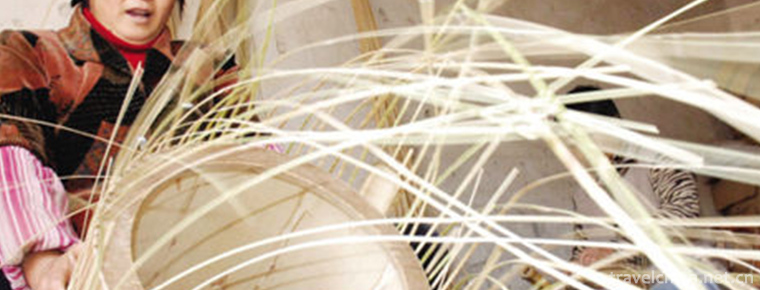
-
Wulong Karst Tourist Area Movie Transformers Place
Wulong Karst Tourist Area is located in Wulong District of Chongqing City. It has rare natural karst landscape, including karst caves, Tiankeng, ground crevices, canyons, peaks, alpine grasslands, etc.
Views: 223 Time 2018-12-12 -
Bayi Memorial Hall in Nanchang
The Bayiyi Memorial Hall in Nanchang was established in 1956 and officially opened to the outside world on October 1, 1959. In 1961, it was announced by the State Council as the first batch of key nat.
Views: 154 Time 2018-12-31 -
Qingming Bridge Ancient Canal Scenic Area
Qingming Bridge Ancient Canal Scenic Area is located at the southern end of Wuxi city center, covering about 44 hectares of scenic area. The scenic spot is composed.
Views: 160 Time 2019-02-07 -
Eyes of Tianjin
Tianjin Eye, full name Tianjin Yongle Bridge Tientsin Eye, crossing the Haihe River connecting Hebei and Hongqiao District, is a cross-river construction, bridge wheel in one Ferris wheel, both touris.
Views: 128 Time 2019-02-21 -
River chant
River chant is a traditional folk song spread in the Yellow River and the Yangtze River valley. In ancient times, when people were fighting with nature, they shouted; when harvesting.
Views: 105 Time 2019-05-05 -
Legend of the ancestors of Khitan
The legend of the ancestors of Qidan is a folk legend that is spread in Pingquan County, Hebei Province, China. According to legend, the ancestors of Qidan were born on the Futu River in Mayushan.
Views: 111 Time 2019-06-10 -
Architectural Construction Skills of Shikumen Lane
Shikumen is a new type of architecture which combines the characteristics of western culture and traditional Chinese dwellings. Shanghai Shikumen Lane Residence originated in Tongzhi Period of Qing Dy.
Views: 124 Time 2019-06-15 -
Yangge Opera
Yangge Opera is a traditional opera art widely popular in China, mainly distributed in Shanxi, Hebei, Shaanxi, Inner Mongolia, Shandong and other places. It originated from the songs sung by the worki.
Views: 207 Time 2019-07-10 -
North Sichuan Medical College
North Sichuan Medical College is located in Nanchong City, a famous historical and cultural city in Sichuan Province and the birthplace of Three Kingdoms Culture. The school's predecessor was the Nort.
Views: 281 Time 2019-08-31 -
Meishan climate
Meishan city is located in the middle and low latitudes, located in the west of Sichuan Basin and the middle reaches of Minjiang River. It is characterized by the alternation of sea land monsoon every year. It has four distinct seasons, mild climate, abundant rainfall,.
Views: 334 Time 2020-12-18
